DIGITAL ELECTRONIC
Are you looking for the best free Nodejs hosting platforms? You are at the right place. Node.js is a highly popular JavaScript open-source server environment used by many developers across the world.
Right from its commencement in 2009, the server has grown in huge popularity and is used by a lot of businesses. The industry and business sectors primarily make use of Node.js.
At present, Node.js is a most loved and well-known open-source server environment. Besides this, it provides the most convenient structure, which supports JavaScript as well as resolves various obstacles. Furthermore, it has made JavaScript easily understandable for programmers on the devices. In this article, we will check out the best free Nodejs hosting platforms that will prove very helpful.
By the end, you will have a strong understanding of various options available for the free Node.js hosting solutions accessible for your Node JavaScript projects and can make an informed choice on which service suits your requirements.
Render
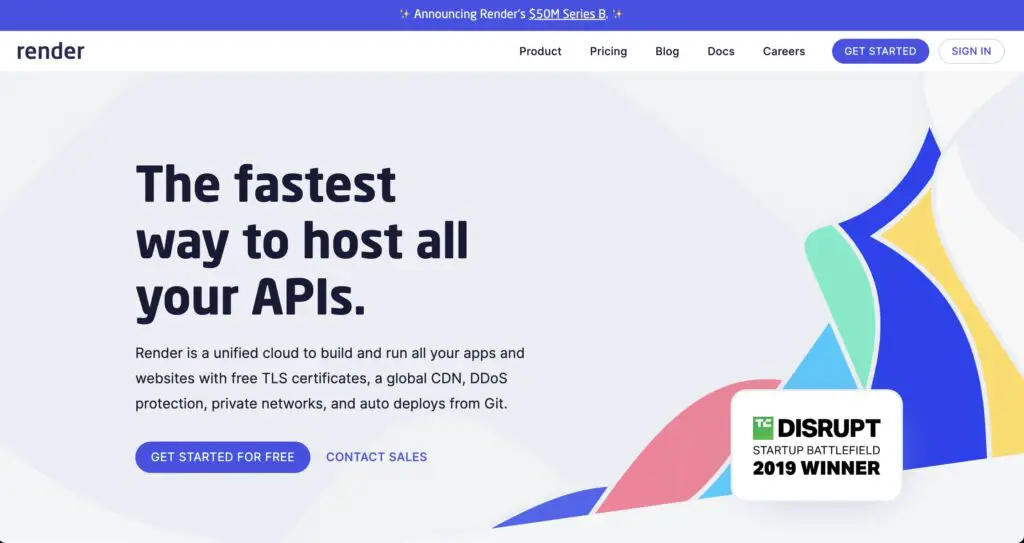
Render is a new company that offers free static hosting. It offers a wide range of free services that include Node.js & Docker hosting. Its pricing page static site, Redis, PostgreSQL, and services for free. Though there’s a little catch for PostgreSQL it runs only for 90 days free. Render has the smoothest and easiest developer experience as well and deploying the Node app was easy to use.
It has comprehensive docs that will help you deploy Node.js apps for free and also host various other languages as well as frameworks. There are a few other things that you may deploy on the Render app and they are Go, Python, Docker, and PHP (Laravel). You can host various other Node.js choices on Render such as Bun.js and Deno.
Features:
- Simple deployment with just one click.
- Get 1 GB of free storage.
- Auto Scaling for traffic surges.
- Constant deployment that will keep applications updated.
- SSL Certificates for safe communication with the users for free.
Vercel
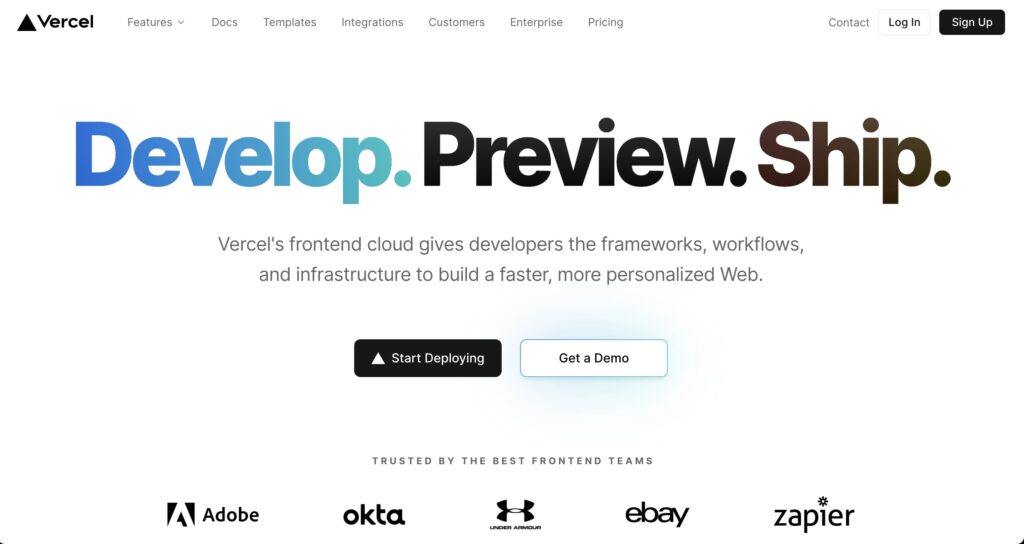
Earlier known as Zeit, the Vercel app acts as the top layer of AWS Lambda which will make running your applications easy. It’s the serverless platform that will run a range of things with stronger attention on the front end.
Vercel hosting platform is a popular hosting service with a lot of cutting-edge functions as well as amazing developer experience. Even though Vercel mainly focuses on front-end applications, it has built-in support that will host serverless Node.js features in a free tier. Vercel will be configured for retaining server experience with the help of the Legacy Serverful Behavior.
Thus, Vercel is the best hosting platform, which is loved by a lot of developers, and hosting Node APIs on this platform will be a great benefit.
Features:
- Integrate Git hosting solutions like GitLab, GitHub, and BitBucket
- Vercel provides a generous free plan and does not need a credit card
- It supports some popular front-end structures such as Next, React, Vue, and Gatsby
- Deploy & execute server-less features
- Various project themes to bootstrap the new app
- Vercel analytics will monitor the performance
Glitch
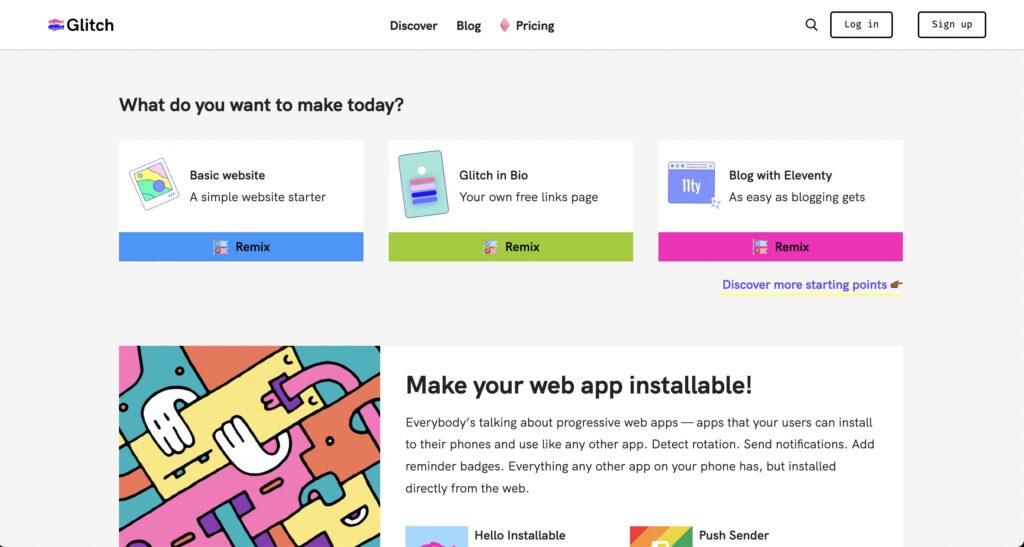
If you are looking for the best and most free Node.js hosting API for some fun projects, Glitch’s free feature plan is a perfect application for you. It is the best for fun prototyping or apps. For some serious projects, you have to check out their Pro program which runs for over $8 monthly (paid on an annual basis).
Their free plan allows you to create the app anonymously, although you will have to log in through Facebook or GitHub if you want this project to be live (any anonymous applications will expire within 5 days).
Fastly acquired Glitch in 2022, and started offering their Pro plan as the best way to expand on limits. It was made by Stack Exchange, Stack Overflow, and Trello.
Features:
- Limitless project uptime
- Custom domains offered
- Additional disk space
- Friendly UI
- Tutorials to get you running
- Integrate with APIs & other tech
Cyclic
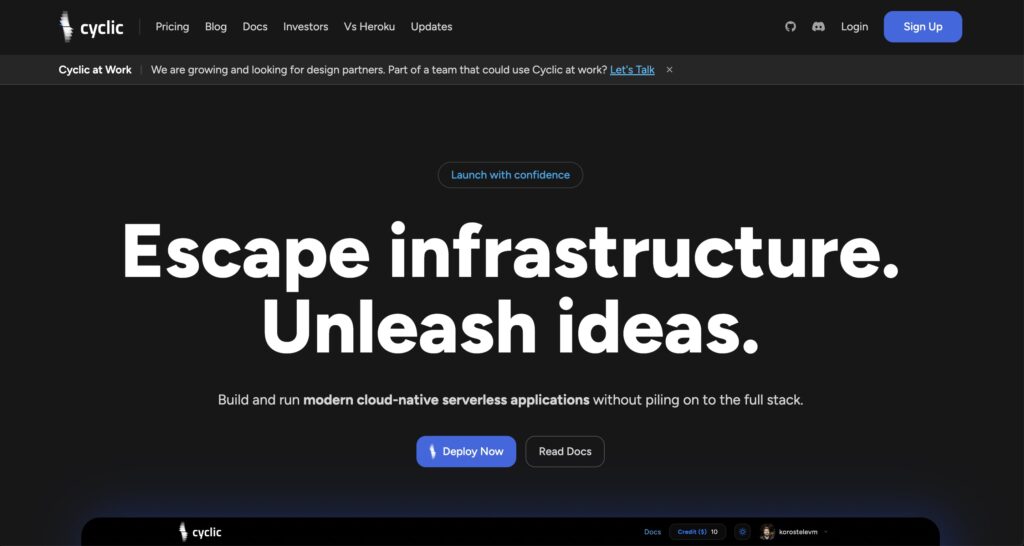
Cyclic offers full-stack Node.js services for free. This is the serverless wrapper made on top of AWS. As mentioned on their pricing page it has the self-claimed free tier to deploy one app and can easily be invoked ten thousand times in one month. It has some soft and hard limits stated on its limits page.
As mentioned on its pricing page it has a self-claimed free tier to deploy one app which can be invoked ten thousand times in one month. It has some soft and hard limits on its page.
Features:
- 1GB runtime memory
- 10,000 API requests
- 1GB Object Storage
- 512MB storage
- 3 Cron tasks
Google Cloud
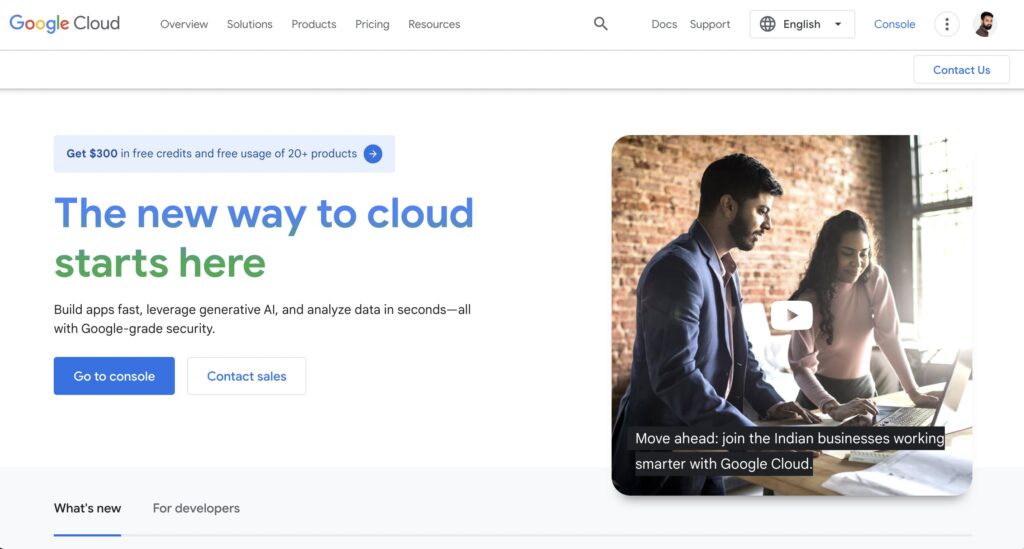
Now developers can experience low latency networks & host your apps for your Google products with Google Cloud. With the Google App Engine, developers can focus more on writing down code without worrying about managing its underlying infrastructure. Also, you will pay only for the resources you are going to use.
This service provides a vast choice of products or services that you can select from. It is simple to start with the App Engine guide. All customers and developers can take benefits of more than 25 free products on its monthly usage limits.
Besides, Google Cloud service is the best selection for webmasters looking to compare their features as well as select a good web hosting service for their websites. It offers the most intuitive user interface & scalability choices. What’s more, the pricing is competitive and straightforward.
Features:
- Friendly UI and scalability options
- More than 25 free products
- Affordable, simple to use, and flexible
- Range of products
- Simple to start with user manual
Amazon AWS
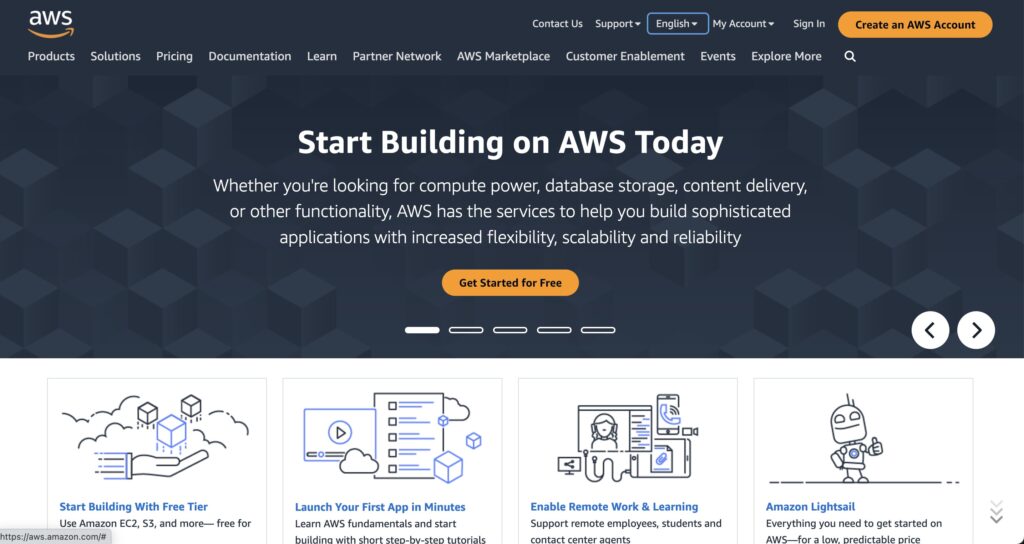
Amazon Web Services or AWS powers the whole internet. It might be a little exaggerating but would be incorrect to not talk about its popularity. The platform integrates many services that make them the top options as the Node.js free hosting app.
AWS is a cloud-based server that doesn’t offer hosting with the physical server but uses the virtual server. The majority of users prefer cloud hosting since it won’t ask you to pay for any additional resources when buying. Instead, it just charges you for used-up space.
The company offers a free hosting plan that will give you a very good start. For its paid plans you need to pay for every hour for the service category that will be for one to three years period. Separate costing for storage, computing, migration, database, and transfer, networking and content delivery, media service, developer tools, analytics, and more are present.
To start with AWS hosting is very simple. All you have to do is just upload the code and allow AWS to provision & deploy everything for you. There’s no cost of using its Elastic Beanstalk service and you are charged for services provided by AWS.
Features:
- Pay only for used storage space
- Simple integration of plugins
- Monitoring included
- Load balancing and auto-scaling to scale an application
- Free plans will expire after a year
- You need to couple the paid services and free services to launch the fully functional website
- AWS paid services are costly
- Good for web apps & SaSS platforms
Microsoft Azure
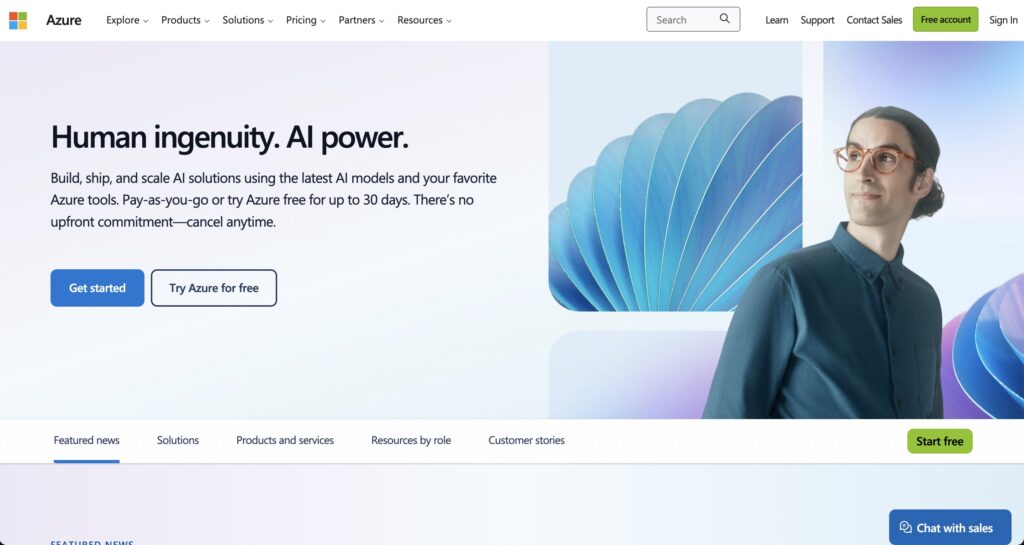
Microsoft Azure is a robust cloud computing server that makes it simple to host & deploy Node.js apps. It provides an App Service that includes fully managed service for Node.js web hosting applications without any upfront commitment & cancel option.
Their service provides the most sophisticated vision, language, speech, and AI models, hence you will be able to create your machine-learning system. You can create applications that can detect & classify various concepts and objects
Many web developers find their service to be highly reliable and powerful, especially for cloud computing. It helps to create various web apps. With Azure you can find some amazing functions that you can start quickly, their AI models have advanced options. The platform offers free core services and you also get a credit of $200 as an incentive for trying out this platform.
Features:
- Applications can detect and classify objects
- Fully managed Node.js app hosting
- High-class vision, speech, language, and decision-making AI models
- Cloud computing platform to create online apps
- Scale web apps
- Sophisticated AI models provide advanced options
Netlify
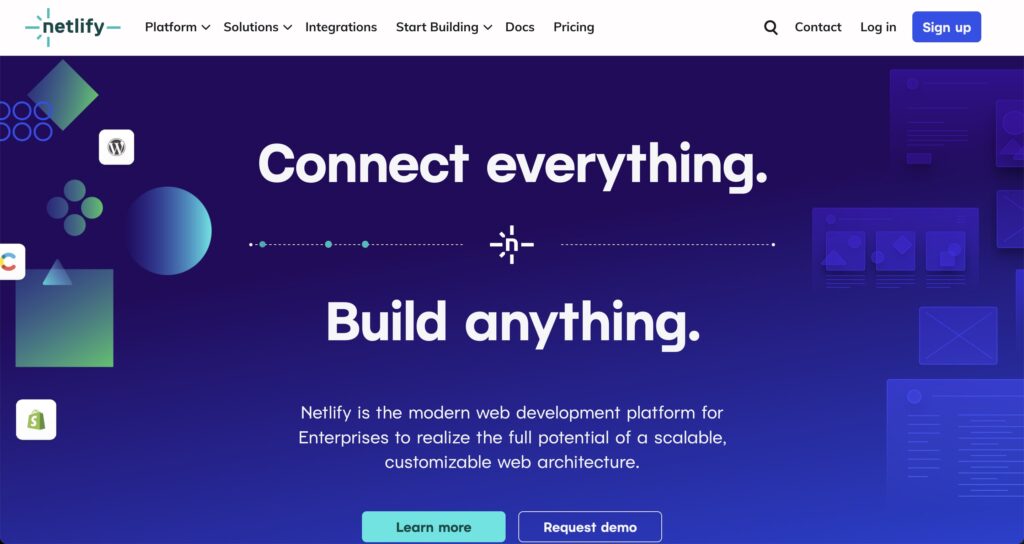
Netlify is yet another popular platform to deploy web projects and apps. The platform provides a free hosting program that has an integrated system to deploy various projects and software from GitHub and GitLab. You just need the project URL to create features, and you are all set to start.
Netlify has a friendly user interface with free SSL, it gives you fast CDN access. Besides, Netlify has Serverless support, so you can use their Functions Playground and create the Serverless features and deploy The Gatsby with WordPress API immediately.
Netlify maintains a very active project GitHub page. Till now, they have published over 240 packages for open-source collaboration. Their web hosting function is created by the developers for developers.
Features:
- Create history so you may roll back when any issue presents itself.
- Deploy project is done automatically with Git. private or personal repos.
- Access to Edge network – distributed CDN globally.
- Host a wide range of websites.
- 100GB bandwidth and 6 hours of build time.
Qovery
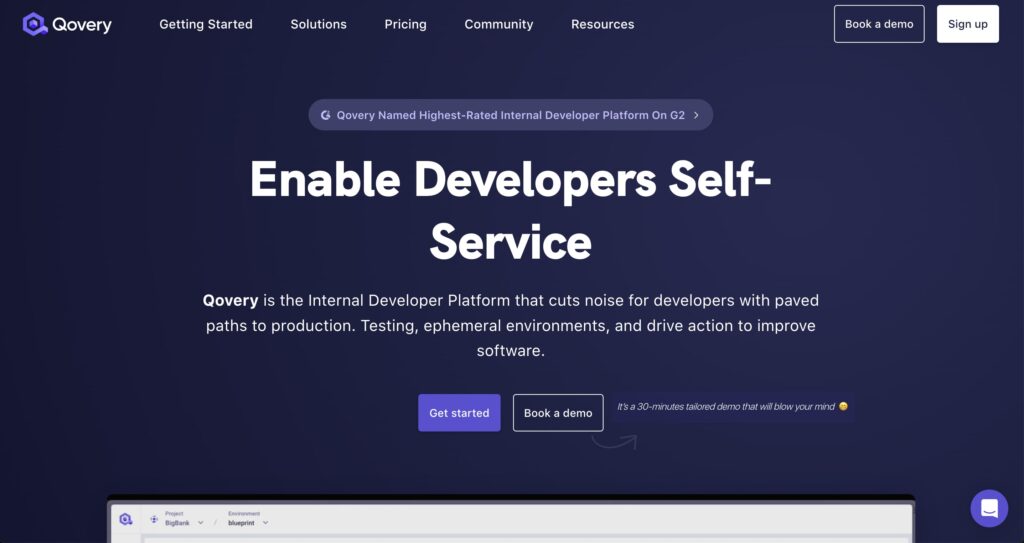
If you do not have any prior experience in managing cloud infrastructure, Qovery is the best choice for you. This platform was made from scratch to help startups improve their operations. At present, Qover is accessible for DigitalOcean, AWS, and Scaleway users.
To make it clear and use Qovery solutions, you will require an account on those cloud solutions. With AWS free plans and a combination of Qovery – it will create a most powerful combo for use. At least for the small-scale projects, that you are not yet ready to commit to complete.
If that is not a big trouble, you may take complete benefit of Qovery’s core functions. Build from Git, and deploy in different stages, and utilize Kubernetes to scale while demand exceeds.
Features:
- Over 1 cluster
- Unlimited Developers
- One-click Preview Environment
- Over 5 Environments
Conclusion
So here you have the complete list of different platforms where you may host the Node.js projects. All the hosts in this guide provide excellent web services & generous free tiers. Besides, they will help you to build a strong website. Finally, it comes down to what type of experience that you want. We hope this blog post on the best free Nodejs hosting platform has helped you find the right hosting service!
The post 9 Best Free Node.js Hosting 2023 appeared first on The Crazy Programmer.
from The Crazy Programmer https://ift.tt/c98h2xK


